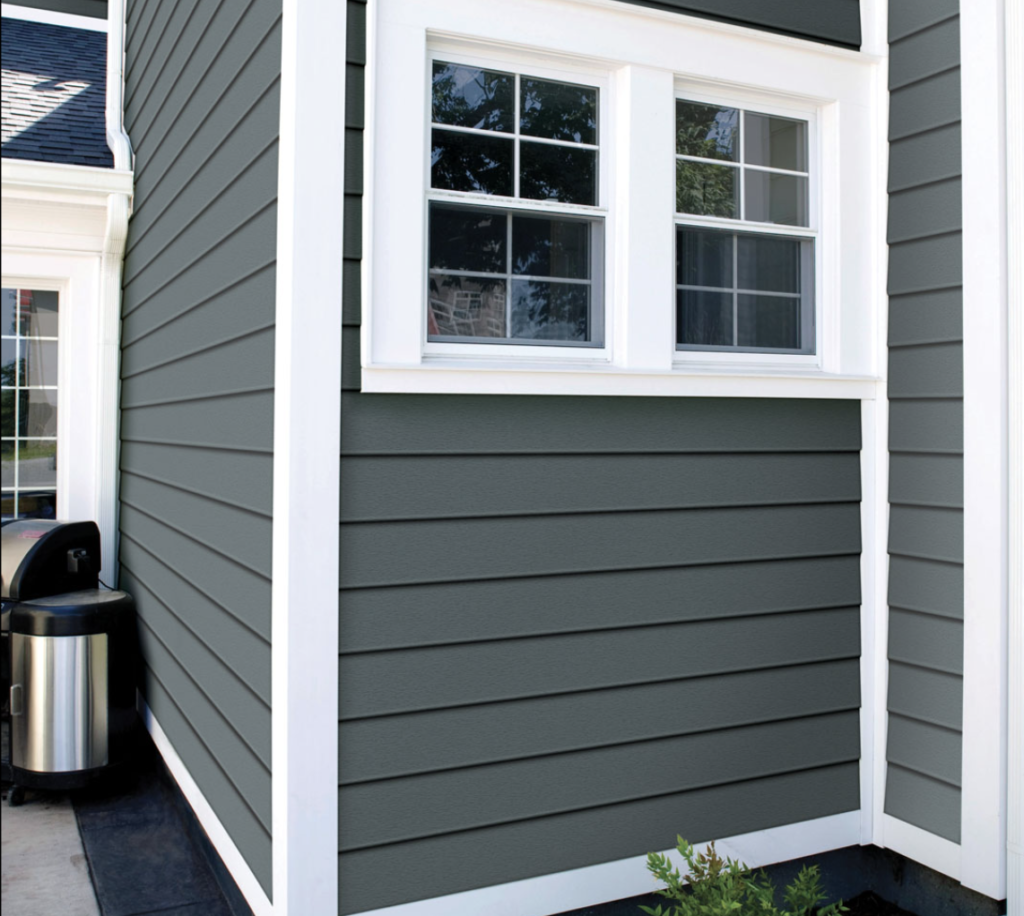Published on: July 20, 2023

Vinyl siding corners, also called channels are the pieces of trim that help connect siding across 90-degree corners. In a sense, these corner pieces provide the finishing touch to a home’s vinyl appearance.
Corners offer a clean appearance but also ensure your home is fully sealed and protected from the elements. There are many types of vinyl trim types, including:
Each of these trim pieces is used in different contexts. Your home might use all or just a few of these trim types depending on its characteristics.
At first glance, you might think that your vinyl siding corners are only there to make your home look good. But they play a crucial role in securing vinyl sheets in place. The fasteners for the corner pieces are below the trim, which makes these pieces hard to replace without removing at least some of the siding.
So if you have damaged pieces of corner trim, it’s better to repair these trim pieces when possible. Here’s a look at how to complete a corner repair.
If your home has vinyl siding and you’ve noticed weaknesses or issues with the corner pieces, you’re best off calling an expert. But if you can’t talk call in an expert for replacement and want to fix the issue yourself, you’ll want to read up carefully on how to safely replace corner trim.
Get out your tape measure and measure the part of the corner trim that is damaged or needs replaced. Add four inches to your measurement just to be safe.
You likely won’t need much trim. The hard part is finding a good color match with your existing siding. If you know the manufacturer and color of your trim, this will make it easier. But if you purchased the house with the vinyl siding already in place, it might be challenging to match this up. Just do your best and talk to some experts who can help you create a good match.
Now that you have the necessary replacement trim and know what size it needs to be, you’re ready to use tin snips to cut the trim piece to the right size. You should be able to find tin snips at your local hardware store. And as you’re trimming, try to make your lines as straight as possible.
Using tin snips, cut off the nail flanges on both sides of the corner trim.
Sand down the area of trim you’re aiming to cover and replace with medium grit sandpaper. This will help ensure your adhesive will stick to the surface as you’re essentially covering the damaged trim with your new piece of trim. The goal is just to roughen the surface.
Sand the underside of the new trim piece as well to roughen that surface and prep it. Once you’ve sanded both pieces, use a clean rag to remove all dust from the old and new trim.
You’ll need polyurethane glue. Apply it to the back of the new trim using a paintbrush to create an even coat. Give the glue a few minutes to begin drying so that it is tacky when it meets the old trim. Place the new trim carefully over the damaged area and press it on firmly to create a tight seal.
Place painter’s tape on the top and bottom of the new trim until the glue has time to dry. Ideally, you should leave the patch overnight to dry. You should complete this project during a time when there is no rain in the 24-hour forecast to ensure the new trim piece has plenty of time to adhere properly before facing challenging weather conditions.

Homeowners have many options when it comes to whether to match trim colors to their main siding color or to use this space to create a nice accent.
Matching the trim color to the siding can create a smooth, seamless appearance. And in corners, that might be what you want. In contrast, you might want to trim around roof lines to pop a bit more with some contrast.
There are many ways to design your home’s exterior to draw attention to aspects that you love and downplay features that might be somewhat awkward or not be the features that are your favorite parts of the home.
Talking to a siding contractor about what might look best for your home is a good start if you need to replace your corner trim. That way, you can consider not just your home’s protection, but also its curb appeal.
Many homeowners like white trim because it offers a crisp appearance against a variety of siding colors. But sometimes, a milder contrast between your siding and trim looks better than a large contrast with crisp white.
Whether your home needs repairs or complete siding replacement, 2FL Windows, Siding and Roofing is a reliable contractor in the Seattle area. Our team can help you design the perfect home exterior and create security from the elements by recommending the best materials with high-quality warranties. Schedule your free estimate now.
Still, have questions about replacing or repairing your siding trim? Here’s a look at some commonly asked questions and answers.
Your color preferences are completely up to you. Lighter trim can draw attention to various aspects of your home. But darker trim or trim that matches could downplay certain characteristics and help create seamless transitions for your home.
Siding trim ensures moisture stays away from your home’s building materials and foundation. It seals your home and adds visual appeal to the home as well.
Yes, undersill trim protects your home under windows, roofs and other features. It helps hold the top row of siding in place.
Further Reading:
Comments are closed.

Read the latest articles about siding.







[…] What Are Vinyl Siding Corners and What Purpose Do They Serve? […]
[…] What Are Vinyl Siding Corners and What Purpose Do They Serve? […]
[…] What Are Vinyl Siding Corners and What Purpose Do They Serve? […]